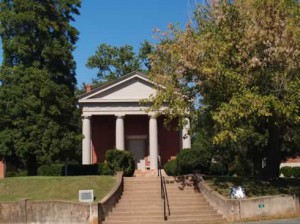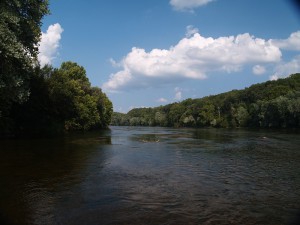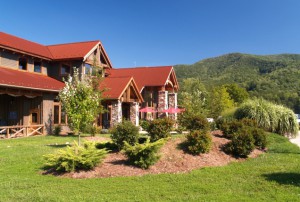Charlottesville Antique Stores:
Making History Part of Your Home
In a part of the country steeped in history, it’s no wonder that Virginia has an abundance of antique stores. The Charlottesville/Albemarle area in particular offers a vast enough range to accommodate varying styles and 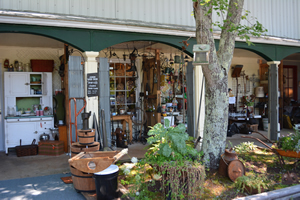 tastes, from finely curated galleries to eclectic collections and antique malls that offer a mash-up of numerous vendors. You can easily find antique furnishings and vintage items to incorporate history into your newly purchased home, even as you yourself become a part of the region’s history in choosing to reside here. Whether you’re looking for a locally crafted and restored farm table, or imported antique Venetian glass, or an 18th century French settee, you have ample antique retailers and knowledgeable experts in the business to choose from. Here is just a sampling of the many antique stores in the Charlottesville/Albemarle area.
tastes, from finely curated galleries to eclectic collections and antique malls that offer a mash-up of numerous vendors. You can easily find antique furnishings and vintage items to incorporate history into your newly purchased home, even as you yourself become a part of the region’s history in choosing to reside here. Whether you’re looking for a locally crafted and restored farm table, or imported antique Venetian glass, or an 18th century French settee, you have ample antique retailers and knowledgeable experts in the business to choose from. Here is just a sampling of the many antique stores in the Charlottesville/Albemarle area.
Circa (http://circainc.com/)
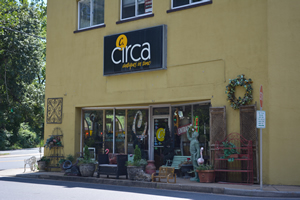 Occupying a large corner of McIntire Plaza in Charlottesville, Circa offers 10,000 square feet of antiques and furniture. Whether you’re looking for an old farm table, an elegant sofa with carved wooden feet, a salvaged mantelpiece, or teal-tinted mason jars for bouquets of cut flowers, you can find countless objects with a history to complement your new home. Owned and operated by a mother and daughter team, all staff members are trained as buyers so there is an eclectic range of items to choose from, including vintage pieces, original artwork, and funky decor. They also do their very best to price affordably so there is no need to haggle. And, perhaps most exciting of all, they can deliver (for a fee)!
Occupying a large corner of McIntire Plaza in Charlottesville, Circa offers 10,000 square feet of antiques and furniture. Whether you’re looking for an old farm table, an elegant sofa with carved wooden feet, a salvaged mantelpiece, or teal-tinted mason jars for bouquets of cut flowers, you can find countless objects with a history to complement your new home. Owned and operated by a mother and daughter team, all staff members are trained as buyers so there is an eclectic range of items to choose from, including vintage pieces, original artwork, and funky decor. They also do their very best to price affordably so there is no need to haggle. And, perhaps most exciting of all, they can deliver (for a fee)!
The Consignment House (http://consignmenthouse.net/)
Located on Charlottesville’s downtown mall on the corner of 2nd Street NW, across from the Downtown Grille, The Consignment House is a fun place to stop in when you’re out for a stroll. Their large window displays entice customers with unique sculptures, pastoral paintings, and modern seating. Once inside, you’ll see that their inventory includes a wide selection of furniture from the 18th century to mid-century modern, in addition to jewelry, antique telephones, fine artwork, oriental rugs, and art glass from Finland, Scandinavia, and the Venetian island of Murano. As it is a consignment house, after all, you can also sell items there and receive 60% of the final selling price.
Oyster House Antiques (http://www.oysterhouse.com/)
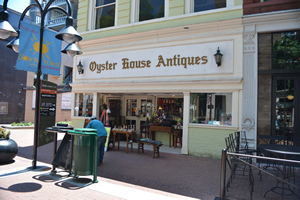 Also on the downtown mall, next door to The Fitzroy and across from Wells Fargo, Siddhattha Buddha statues sit in windows and colorful paper lanterns rest on outdoor tables, inviting you into Oyster House Antiques to explore a visual history of China. Here, eastern antiques inspire creative uses in modern western households. For instance, an old wardrobe with ornate doors can be repurposed as a media cabinet. In addition to the downtown location, you can find their warehouse, which is open on weekends, across from Bodo’s on Preston Avenue.
Also on the downtown mall, next door to The Fitzroy and across from Wells Fargo, Siddhattha Buddha statues sit in windows and colorful paper lanterns rest on outdoor tables, inviting you into Oyster House Antiques to explore a visual history of China. Here, eastern antiques inspire creative uses in modern western households. For instance, an old wardrobe with ornate doors can be repurposed as a media cabinet. In addition to the downtown location, you can find their warehouse, which is open on weekends, across from Bodo’s on Preston Avenue.
The Habitat Store (http://www.cvillehabitat.org/store-landing)
Not far from Circa in Charlottesville is The Habitat Store, a great source for affordable secondhand items, perhaps especially if you have plans to renovate your recently purchased house in the Charlottesville area. Their inventory includes windows, doors, doorknobs, light fixtures, appliances, and furniture, and they also happen to be the recipient of brand new, high quality donations such as tile flooring, laminate flooring, and rugs, all sold at an affordable price.
Patina Antiques (http://patinaantiquesetc.com/)
Patina Antiques on East High Street in Charlottesville, a half mile from the downtown pedestrian mall, takes pride in its eclectic collection of old and new where you can find antiques as well as funky and functional pieces. They have a saying about their store: “Some things 19th century, some things $19.” But the idea that brings cohesion to the place is that both time and ownership affect and alter the history of an object, giving it a value all its own. They are happy to help, whether you’re browsing or on the hunt for a particular item, and are open Monday through Saturday.
Kenny Ball Antiques (http://www.kennyballantiques.com/)
Offering more upscale, imported French, English, and Italian antiques from the 18th and 19th centuries, Kenny Ball Antiques is located in Charlottesville’s Ivy Road shopping center, near Foods of All Nations. They also can accommodate interior design assistance at an hourly rate.
The Curious Orange Store (https://thecuriousorangestore.com/)
Antique dealer and designer Roderick Coles specializes in European antiques, which you can view by appointment only in his Curious Orange Store located on Ivy Road across from the Boar’s Head Inn. Among his collection are vintage and modern home décor and furnishings. Items can also be purchased online.
Rockfish Gap Country Store (https://www.facebook.com/Rockfish-Gap-Country-Store-353953237986162/)
Past Crozet and just outside Afton on 250 west, you’ll find Rockfish Gap Country Store to be a charming stop on your country drive. The wide white building with a red roof was originally constructed in the 1930s to provide a packing shed and market for local fruit farmers, and is easy to spot from the road. And while it does offer some things you would expect to find in a Virginia country store, such as local wines, cheese, jellies, handmade soap, and candy—and even has a Christmas Room with ornaments and decorations—it also provides a storefront for 25 antique vendors to display their furniture, glassware, vintage Americana, and jewelry.
The Covesville Store (http://covesvillestoreantiques.com/)
Just 15 minutes from Charlottesville, a peaceful drive down 29 south, is The Covesville Store. Housed in a beautiful old yellow building with a double porch, it is packed with a variety of antiques, which the owners, Sarah and Rick Ovenshire, also showcase on their website. There is plenty of ground to cover and lots to see, from shelves lined with candlesticks, sculptures, and knickknacks, to antique washstands and handmade dressers. The Ovenshires are very knowledgeable and will be able to tell you the history of any item that catches your eye.
Tuckahoe Antiques (http://tuckahoeantiques.com/about-us/)
Near Wintergreen Resort, on Route 151, Tuckahoe Antiques provides two floors and 10,000 square feet of antiques from many different dealers all under one roof in a building that was originally an apple shed. Whether you’re looking for original artwork, local antique furniture, or Southern-inspired décor, you can enjoy many browsing hours here taking in all there is to see.
Shabby Love (http://www.shabbylovefurniture.com/)
When it comes to restoring antiques, Shabby Love in downtown Orange does the work for you! Their shop features upcycled unique finds previously in need of tender loving care, such as a vintage vanity, bedside tables, and reupholstered wingback chairs. Their prices tend to be higher than Circa but account for the work the Shabby Love team has put into restoration. Their Orange storefront is open Thursday through Sunday, while their Roanoke location is open seven days a week.
Melrose Antiques & Fine Interiors (http://www.melrosefineantiques.com/)
Centrally located in the town of Orange, this 12,000 square foot gallery space features 18th and 19th century furniture and oriental rugs bought and sold by owners Joseph and Gale Danos, who have over thirty years’ experience. Whether you’re looking for a well-preserved dining table, a leather armchair, unique lamps, fine artworks, or oriental rugs of all shapes and sizes, there is much to see at Melrose Antiques & Fine Interiors.
Gordonsville Antiques and Flea Market (https://www.facebook.com/gordonsvilleantiqueandfleamarket/)
Housed in a long and low white building, Gordonsville Antiques and Flea Market contains the finds of 20 different vendors. From an animal print loveseat to porcelain busts and bookends to a vintage icebox and wooden crates, the style of the vendors varies from rustic to regal!
Ruckersville Gallery (http://www.ruckersvillegallery.com/)
This antique mall with over 80 dealers and 150 consignors in a 50,000 square foot showroom is known as Virginia’s leader in estate sales and employs a buyer with almost 40 years of experience in the business. You will want to set aside plenty of time to amble through their extensive collection located on 29 North, next to the Blue Ridge Café.
A & W Collectibles (http://awcollectables.weebly.com/)
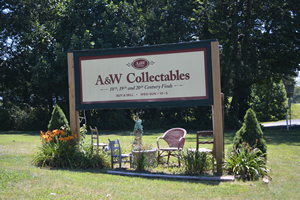 Located in Keswick, six miles east of Charlottesville, A & W Collectibles is a collection of over twenty different vendors with a unique inventory that is frequently in flux. Their current inventory includes clocks, dishware, collectible dolls, vintage hats, antique furniture, and much more.
Located in Keswick, six miles east of Charlottesville, A & W Collectibles is a collection of over twenty different vendors with a unique inventory that is frequently in flux. Their current inventory includes clocks, dishware, collectible dolls, vintage hats, antique furniture, and much more.
As you can see, there are ample aisles of antiques for you to peruse, foraging for the perfect furnishings and accessories to complement your new home, instilling it with your personal taste as well as a sense of history. No matter your style or interests—be it estate sales, imported antiques in boutique curated collections, vintage Americana and collectibles, bargain-hunting or simply the idea of happening upon something unique that speaks to you and will make your home distinct—the Charlottesville/Albemarle area has a lot to offer.


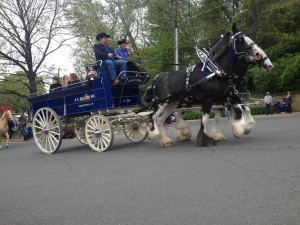 The early years of the festival were exciting and successful. The Charlottesville Municipal Band was a staple of the early Dogwood Festival parades. The Charlottesville Municipal Band was formed in 1992 and has been performing continually ever since. You can still expect to see them at the festival. In 1951 the Belmont Bridge was closed because of the immensity of the festival parade and observers stood in the street intersections near the bridge to watch. Businesses took advantage of the massive parade crowds and both supported floats and ran advertisements on wagons in the parade. Local scouting and civil service organizations also traditionally participated in the parade. Awards were and still are given out for parade floats. In 1951 and again in 1953, a team of acrobats performing in the street without nets were a popular parade attraction. In 1956, a pet show was incorporated into the festival and sponsored by the Charlottesville Kennel Club.
The early years of the festival were exciting and successful. The Charlottesville Municipal Band was a staple of the early Dogwood Festival parades. The Charlottesville Municipal Band was formed in 1992 and has been performing continually ever since. You can still expect to see them at the festival. In 1951 the Belmont Bridge was closed because of the immensity of the festival parade and observers stood in the street intersections near the bridge to watch. Businesses took advantage of the massive parade crowds and both supported floats and ran advertisements on wagons in the parade. Local scouting and civil service organizations also traditionally participated in the parade. Awards were and still are given out for parade floats. In 1951 and again in 1953, a team of acrobats performing in the street without nets were a popular parade attraction. In 1956, a pet show was incorporated into the festival and sponsored by the Charlottesville Kennel Club. The carnival was and is the widely attended centerpiece of the festivities and is held in McIntire Park. McIntire Park has been a large, popular outdoor recreation venue since the 30’s. Paul Goodloe McIntire financed the land acquisition in the 20’s. McIntire also provided land to the City of Charlottesville for Lee Park, Jackson Park, and Belmont Park. McIntire Park was designed with a rolling, pasture-style layout as well as sports fields, nature trails, playgrounds, and picnic shelters, and during the carnival, it serves as a fair ground. In 1966 the nations’ first Vietnam War Memorial was dedicated during the Dogwood Festival at McIntire Park. The memorial features a gun, helmet, and a pair of boots, and holds a plaque that lists the names of 23 local men who gave their lives in service. It was founded by Jim Shisler and is re-dedicated yearly at the close of the festival with honorary music, the placement of 23 new flags honoring each fallen hero, a relevant speaker, and a 21-gun salute.
The carnival was and is the widely attended centerpiece of the festivities and is held in McIntire Park. McIntire Park has been a large, popular outdoor recreation venue since the 30’s. Paul Goodloe McIntire financed the land acquisition in the 20’s. McIntire also provided land to the City of Charlottesville for Lee Park, Jackson Park, and Belmont Park. McIntire Park was designed with a rolling, pasture-style layout as well as sports fields, nature trails, playgrounds, and picnic shelters, and during the carnival, it serves as a fair ground. In 1966 the nations’ first Vietnam War Memorial was dedicated during the Dogwood Festival at McIntire Park. The memorial features a gun, helmet, and a pair of boots, and holds a plaque that lists the names of 23 local men who gave their lives in service. It was founded by Jim Shisler and is re-dedicated yearly at the close of the festival with honorary music, the placement of 23 new flags honoring each fallen hero, a relevant speaker, and a 21-gun salute.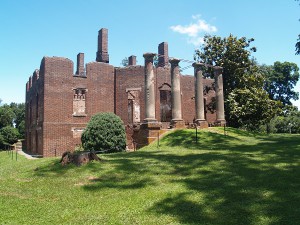
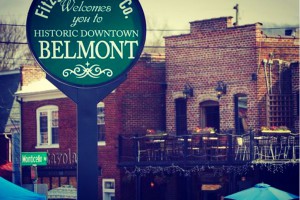 Belmont is a popular Charlottesville, VA neighborhood, located right off the downtown pedestrian mall, and steeped in culture, history, beauty, and modern convenience.
Belmont is a popular Charlottesville, VA neighborhood, located right off the downtown pedestrian mall, and steeped in culture, history, beauty, and modern convenience.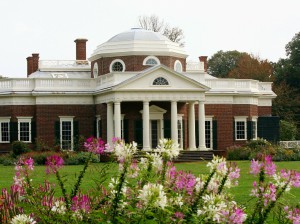
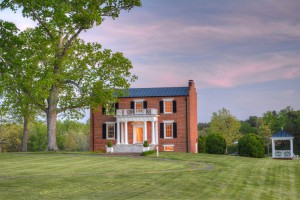

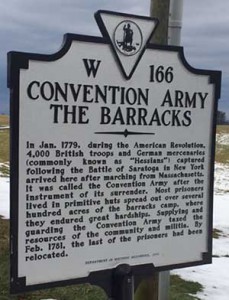 Barracks
Barracks
